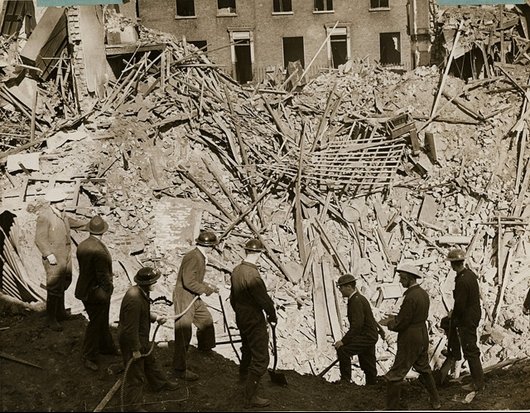Amy Helen Bell.
Reviving History: Savoy Hotel’s £220 Million Facelift
Last year, the Savoy Hotel in London revealed its £220 million renovation, aiming to recapture the splendor of its prestigious past. The refurbishment brought to light the Winter Garden gazebo’s glass dome, unseen since the Second World War when the Savoy served as a gathering place for wartime leaders, foreign journalists, and dignitaries.
During the war, luxury hotels played a crucial role as spaces where people from various backgrounds mingled. The Savoy, especially, stood out as a late-night social hub, hosting both Communist protests and high-profile bureaucratic meetings. Diners frequented the establishment in the hopes of glimpsing the powerful or famous.

With many affluent Londoners losing their homes due to wartime challenges, luxury hotels became living spaces and sanctuaries from the daily hardships of war.
These establishments offered respite from queuing for rations, dealing with limited gas for cooking, and contending with blackout curtains. Additionally, hotels provided access to exclusive foods and wines unavailable privately, as their restaurants were exempt from rationing.
The government imposed restrictions on restaurant meals, capping costs and courses to address wartime inequalities. At the Savoy, the chef navigated this patriotic thrift, introducing innovations like the carrot-based Woolton pie. In the face of challenges, the chef humorously instructed waiters, “Tell them it’s steak or ships!”
Read: Answering Bakhtin
Savoy Grill in Wartime: A Social Hub
During the war, Lady Diana Cooper, the wife of MP Alfred ‘Duff’ Cooper, considered the Savoy Grill to be the one place in London where she could socialize. Known for its unrestricted hours and diverse clientele, the Grill was a constant rendezvous for members of the Cabinet, shift workers, actors, writers, journalists, and Mayfair’s hostesses who had forsaken their private homes but still sought to entertain.
Contrasting Realities: Shelter Disparities During Wartime
On September 15, 1940, a demonstration led by Communist Party organizer Phil Piratin unfolded at the Savoy, highlighting the stark contrast in shelter accommodations between the affluent and the less privileged. During an air raid, seventy Communists from Stepney took refuge in the Savoy’s shelters. However, after the all-clear, they were promptly escorted out, emphasizing the disparity in treatment.
The wartime history of luxury hotels like the Savoy challenges romanticized notions of universal solidarity during “The People’s War.” These establishments allowed the wealthy to circumvent rationing restrictions, enabling greater mingling for the middle and upper classes.
Meanwhile, the working class found themselves relegated to kitchens and back staircases. Diary and memoir accounts depict solidarity within social classes rather than between them, revealing a complex reality during wartime.
However, even opulent hotels were not spared from the widespread impact that befell many of London’s structures during the war – bombings. The Savoy, akin to numerous grand hotels, experienced damage during the Blitz of 1940-1.
In contrast to the Carleton and Langham hotels, the Savoy persevered and did not have to shut down. The fact that the final repairs for wartime damage were completed just last year underscores the lasting imprint of the Blitz on contemporary London.
Also Read: Painting Of The Week: 70


